标签:append love 技术 alt cross print dict time values
总结:
区别:1.列表。可以用list()函数或者[]创建,元素之间用“,”分隔;列表的元素不需要有相同的类型;使用索引来访问元素,元素是有序的,可重复。
2元组。用()或者tuple()函数来实现,元素之间用“,”分隔;元素的值初始化一旦就不可修改;元组只读不写,可重复,元素是有序的。
3集合。可以用set()函数或者{}创建,元素之间用“,”分隔;与字典相比少了键;不可有重复元素;可以读写,是无序的。
4字典。由键key和值values组成;可以用dict()函数或者{}创建,元素之间用“,”分隔,键与值之间用":"分隔;键必须是唯一的、不可变的,但值不要求;元素是无序的;用key来访问元素。
联系:1.元素之间用“,”分隔。
2.列表和元组:列表是可变序列,元组是不可变序列;列表的值可以修改,而元祖的值初始化后不可修改,两者都是有序的。
集合和字典:两者都是无序的;数据量大时可用集合或列表来创建
1.英文词频统计
strBig=(‘‘‘every night in my dreams i see you, i feel you, that is how i know you go on far across the distance and spaces between us you have come to show you go on near, far, wherever you are i believe that the heart does go on once more you open the door and youre here in my heart and my heart will go on and on love can touch us one time and last for a lifetime and never let go till we‘re one love was when i loved you one true time i hold to in my life we‘ll always go on near, far, wherever you are i believe that the heart does go on once more you open the door and you‘re here in my heart and my heart will go on and on there is some love that will not go away you‘re here, there‘s nothing i fear, and i know that my heart will go on we‘ll stay forever this way you are safe in my heart and my heart will go on and on‘‘‘) strList=strBig.split(‘ ‘) print(strList) a=str.upper(strBig) print("全部大写:"+a) b=str.lower(strBig) print("全部小写:"+b) print(strBig.count(‘you‘)) c=str.capitalize(strBig) print("首字母大写其余小写:"+c) d=str.title(strBig) print("首字母大写:"+d) e=str.swapcase(strBig) print("大小写互换:"+e) k=max(strBig) ##max() print(k) m=min(strBig) print(m) strSet=set(strList) ##字母出现的次数 for word in strSet: print(word,strList.count(word))
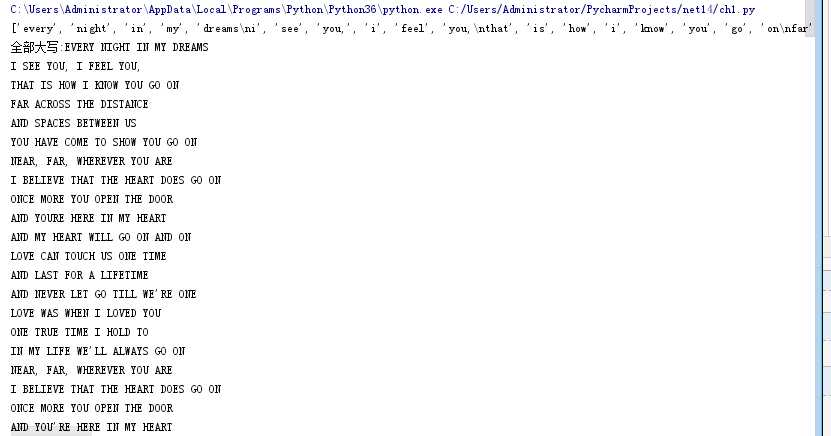
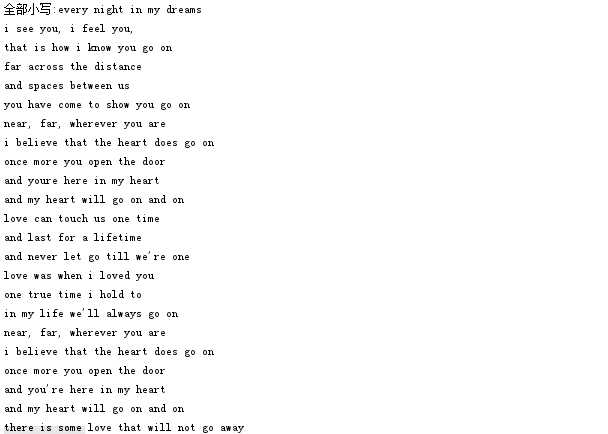
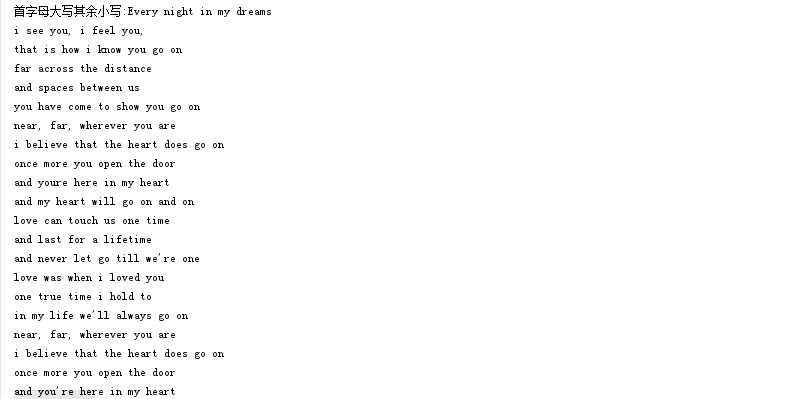
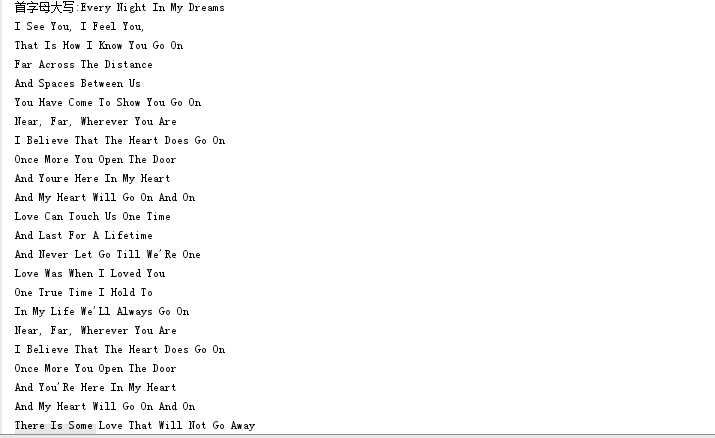
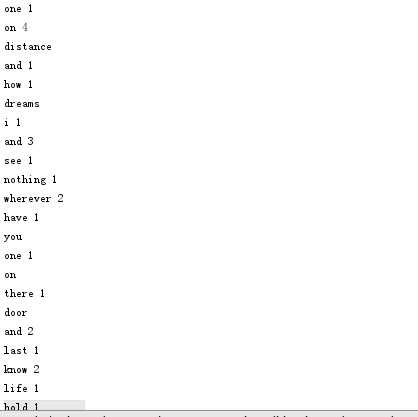
2.列表
classmates=[‘Michael‘,‘Bob‘,‘Tracy‘,‘李三‘,‘Tracy‘,56] a=classmates[1] ##取元素片段 print("取元素片段:"+a) b=classmates[-1] ##取最后一个元素 print(b) print(classmates[1:3]) ##取元素1:3 f=len(classmates) ##取属性 print(f) c=classmates.index(‘Tracy‘) ##取元素的索引 print(c) d=classmates[1]=‘Sarah‘ ##修改 print("修改为:"+d) e=classmates.count(‘Tracy‘) ##计数 print(e) print(classmates) h=classmates.insert(2,"Jack") ##插入元素 print(h) print(classmates) i=classmates.append("Adam") ##追加元素 print(i) print(classmates) j=classmates.pop(1) ##删除元素 print(j) print(classmates)
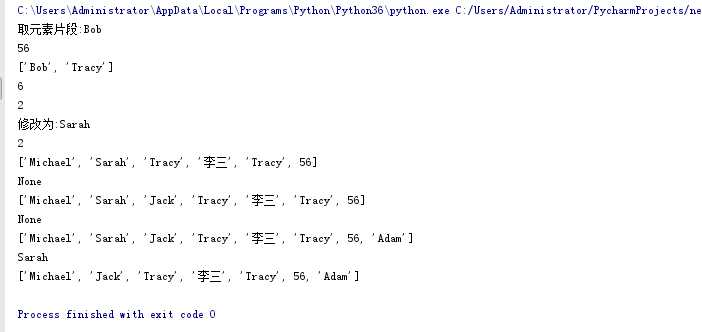
3.元组
class1=(‘Micheal‘,‘Bob‘,‘Tracy‘,‘李三‘,‘Tracy‘,56) print(len(class1)) ##取属性 a=tuple(‘abcde‘) ##元组 print(a)
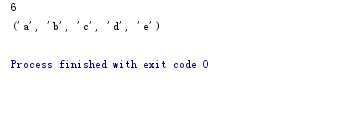
4.集合
s={1,2,3}
a=s.add(4)
print(a)
print(s)
b=s.remove(4)
print(b)
print(s)
s=set([1,2,2,3,4])
s1=set([1,2,3])
s2=set([2,3,4])
g=s1 & s2 ##集合的交运算
print(g)
k=s1| s2 ##集合的并运算
print(k)
g=s2 - s1 ##集合的差运算
print(g)
classmates=[‘Michael‘,‘Bob‘,‘Tracy‘,‘李三‘,‘Tracy‘,56]
new=[‘Rose‘,‘Jack‘]
classmates.insert(2,‘Jack‘)
classmates.extend(new) ##扩展
print(classmates)
classmatesSet=set(classmates)
print(classmatesSet)
z=classmatesSet.add(‘Rose‘) ##增加元素
print(z)
print(classmatesSet)
w=classmatesSet.remove(‘Bob‘) ##删除元素
print(w)
print(classmatesSet)
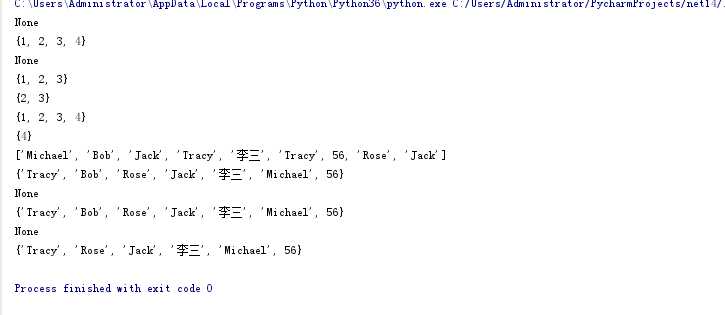
5.字典
classmates=[‘Michael‘,‘Bob‘,‘Tracy‘] scores=[95,75,85] d={‘Bob‘:75,"Michael":95,‘Tracy‘:85} print(d[‘Michael‘]) ##取值 print(len(d)) ##元素个数 ‘Thomas‘ in d ##判断Thomas是否在d中 d[‘Rose‘]=88 ##添加与修改 print(d.pop(‘Bob‘)) ##删除 print(d.keys()) ##输出元素的键 print(d.values()) ##输出元素的值 print(d.items())
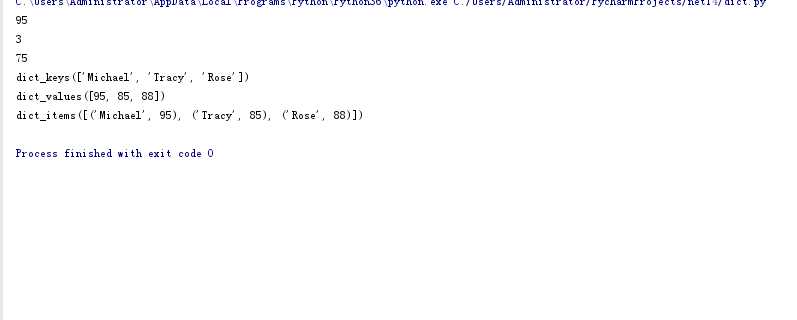
标签:append love 技术 alt cross print dict time values
原文地址:https://www.cnblogs.com/jun11/p/9679944.html